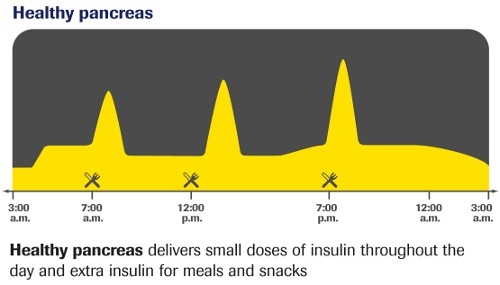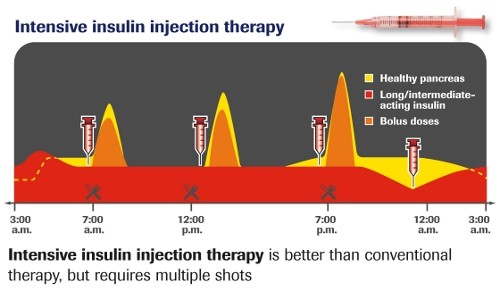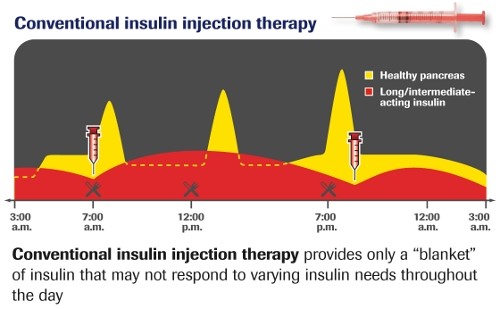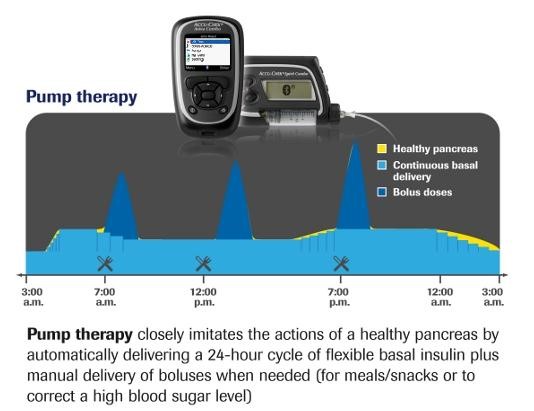Understanding how the pump works
The pancreas versus the pump
The pancreas of a person without diabetes regularly releases small quantities of insulin into the body to regulate blood glucose levels. The amount of insulin released varies with each individual’s internal clock, as well as factors such as physical activity, metabolism, stress and illness. When a person eats, the pancreas releases an extra surge of insulin to regulate blood glucose levels. Insulin pump therapy is a treatment that closely imitates the action of the pancreas, providing a constant supply of insulin to the body and extra doses as they are needed.

Pump therapy versus injection therapy
In contrast to insulin pump therapy, conventional insulin injection therapy does not imitate the action of the pancreas. A blanket injection of long-acting insulin may not correspond to the body’s varying needs during the course of the day—and those using this technique may be forced to plan meals and other aspects of life according to their injection schedules. Intensive injection therapy, involving multiple daily injections of long- and intermediate-acting insulin, is an improvement over conventional injection therapy but does not provide the continuous precise insulin delivery of an insulin pump which most closely mirrors the release of insulin in a person without diabetes.


Precise doses of insulin every day
Pump therapy gives you frequent doses of fast-acting insulin, all day and night. The rate of your basal delivery can be tailored to your body’s metabolic needs and can allow you to sleep, exercise and eat with greater flexibility and peace-of-mind. Your pump can be programmed to deliver bolus doses of insulin before meals or snacks to compensate for your caloric intake. You can determine the precise amount and timing of each bolus.

